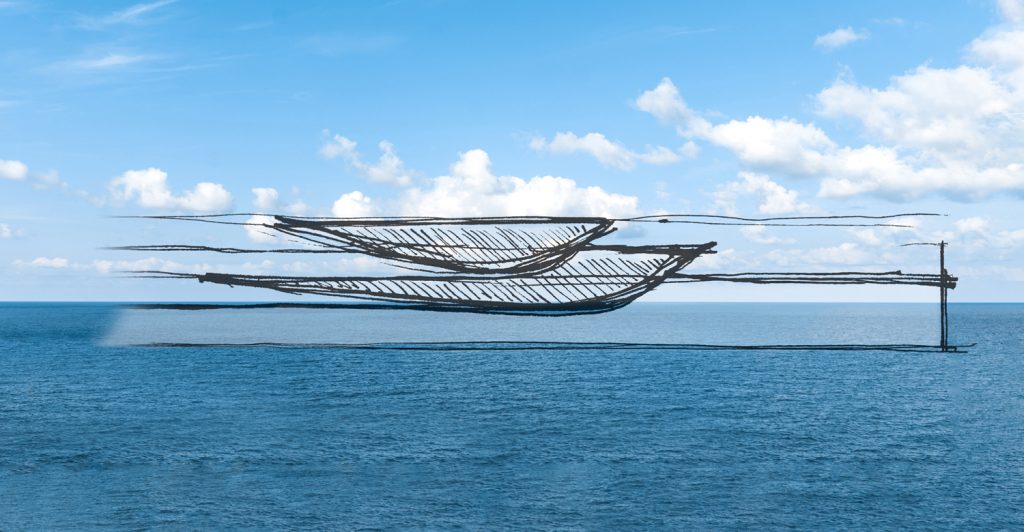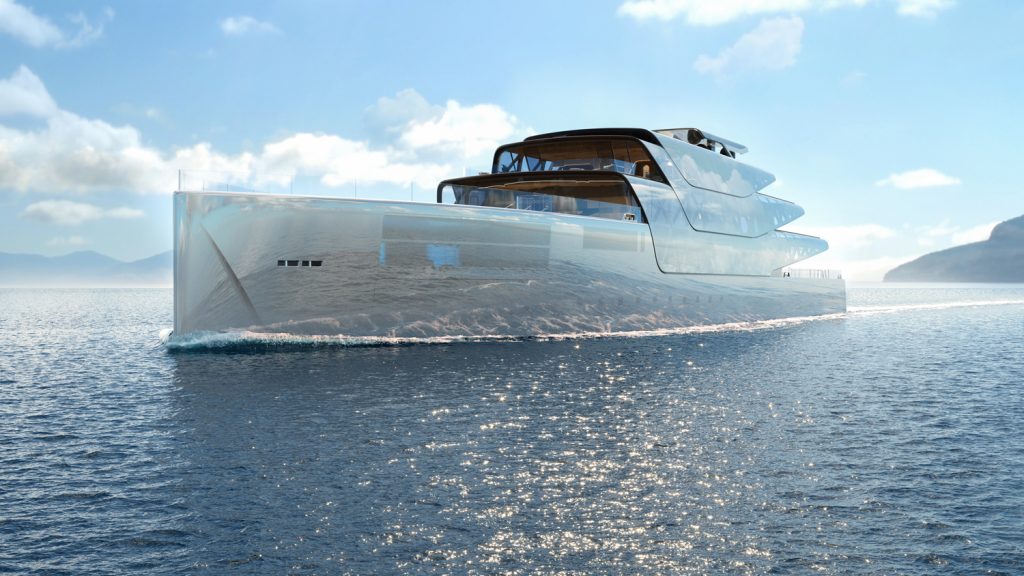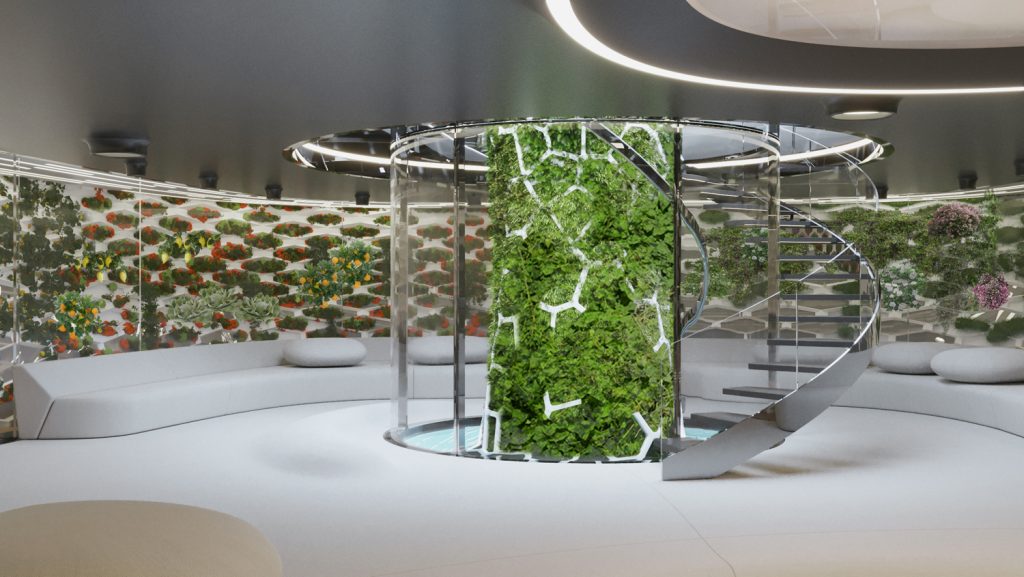
Look at the Virtually Invisible Superyacht
Larger and larger items are being printed using 3D printers but until now no one has ever suggested that one day someone will print a superyacht using one. But designer Jozeph Forakis has drawn Pegasus a concept yacht that he believes will be built circa 2030 using 3D print technology. Not only that! He also claims the yacht will be “virtually invisible” – both visually and environmentally.
3D Printing
The 88 metre superyacht’s construction will use robotic 3D printing to create a mesh framework integrating both hull and superstructure. The result is an extraordinarily strong and lightweight structure. It can be produced using less energy, material, waste, space, and time compared to conventional construction.
The exterior design starts with a low, linear hull with a plumb bow and silvery metallic finish, which blends chameleon-like with the water’s colours and movements. Like a shape-shifting vessel from the future, the lattice framework of her 3D printed structure becomes visible thru the reflective glass at certain angles and lighting conditions. The triangulated structure allows light to penetrate all levels of the interior while framing the remarkable views in all directions.

The centre piece of the futuristic interior design is a multi-level “Tree of Life”. It is a living, breathing monument to mother nature and the nucleus of the hydroponic garden providing fresh food and air purification. The base of the tree emerges from a reflecting pool on the lower deck. It is surrounded by the hydroponic + meditation Zen Garden. The tree extends vertically thru all four levels accompanied by a sculptural spiral staircase.
Guest Areas
The guest lounges will showcase the harmonious balance of minimalist design and living nature. Inside living greenery and rich appointments are integrated throughout. Outside uninterrupted views in all directions allow copious daylight to penetrate to the core. The top level is exclusive to the owner, with forward facing master-suite featuring a large private terrace. The forward pool club has an aquarium-style lap pool and expansive horizontal windows that transform into open balconies on both port and starboard. When closed, the pool cover functions as the helipad. Aft, the open beach club features an oversized Jacuzzi. Fold-down balconies transform into an enclosed solarium with sliding glass panels across the ceiling and down the transom bulkhead.

In operation Pegasus will produce zero carbon emissions and will have a virtually unlimited range. Solar energy is used to convert seawater into hydrogen which is stored for longer periods. Onboard fuel cells convert the H2 into electricity stored short-term in Li-ion batteries.
